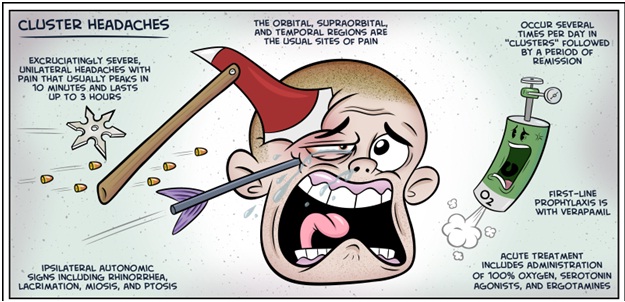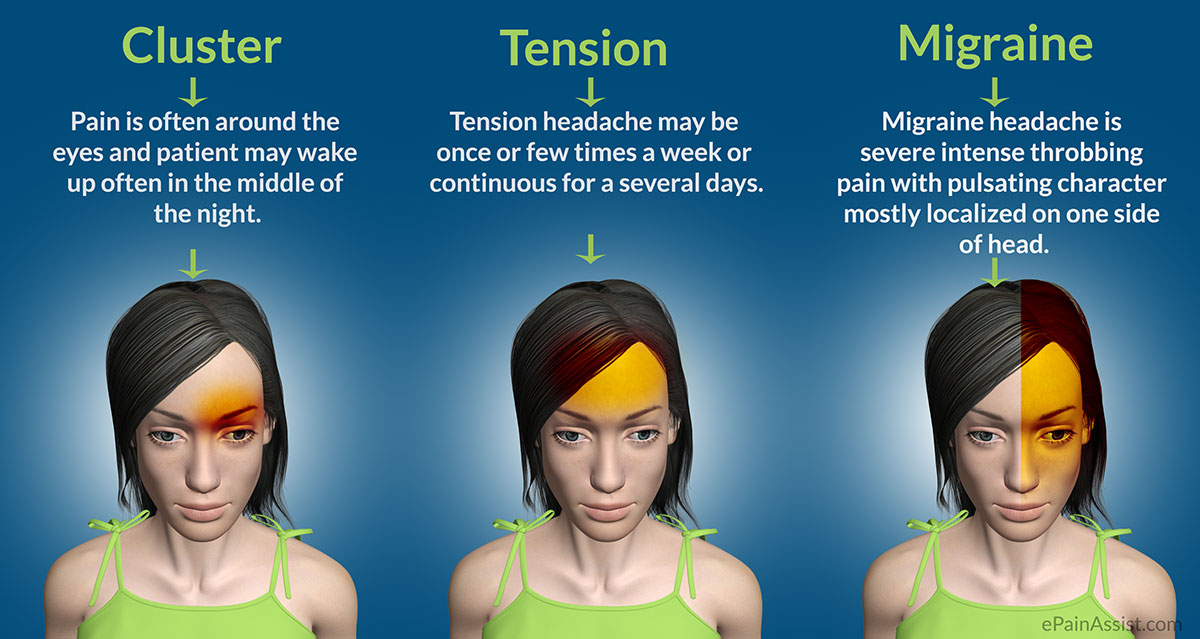What's The Difference Between Headaches And Migraines? Here's How To Tell Them Apart
Three common types of headaches explained.
Headaches. It's one of the most common maladies faced by humans - from the milder ones to the really, really severe, throbbing headaches. The pain levels may vary but they're all equally disruptive to our daily lives.
Headache is basically an ache or pain in the head.
According to an article on The List, neurologist and director of the Kerlan-Jobe Center for Sports Neurology and Pain Medicine at Kerlan-Jobe Orthopaedic Clinic in Los Angeles, Dr. Vernon Williams, said that, "Headaches and migraines are caused when the blood vessels, muscles, and nerves in the head are overstimulated. When these pain-sensitive structures become overactive, or when chemical activity in the brain is altered, we feel the uncomfortable sensations of a headache."
The International Headache Society has identified two main categories of headaches, namely:
1. Primary Headache Disorders
The first category of headaches are categorised based on symptoms and some common types of headaches in this category include tension-type headaches, cluster headaches, and migraines.
2. Secondary Headache Disorders
The second category of headaches are categorised based on causes and this typically involves different types of conditions including head injury, stroke, substance abuse/withdrawal, infection, disorders of the neck, eyes, nose, sinuses or teeth.
To better understand these headaches, here's a brief overview on the three most common types of primary headache disorders:
a) Tension-type headache (TTH)
• This is one of the most common types of headaches and is usually caused by the tightening of the muscles of the neck or scalp. World Headache Alliance says the constriction of the muscles can be triggered by either emotional (anxiety, stress, lack of sleep etc.) or physical (poor posture, lifting heavy objects, etc.) tension.
• Tension headache pain usually ranges from mild to moderate and the pressure can usually be felt at the back of the head or neck and it may move forward, or vice versa. TTH is also felt equally on both sides of the head and can be accompanied by pain in the neck or shoulders.
• World Health Organisation (WHO) describes TTH as having a band around the head, that sometimes spreads into or from the neck. While it can be uncomfortable, tension-type headache's pain is usually tolerable and is not dangerous to your health. If you need relief, take painkillers such as aspirin or ibuprofen.
The information above is based on key facts on tension-type headaches on World Health Organisation and World Headache Alliance.
b) Cluster headache (CH)
• Cluster headaches usually occur in cyclical patterns and is said to be one of the most painful types of headaches - the kind that wakes you up in the middle of the night with an intense pain in or around one eye or one side of your head.
• The 'cluster' in cluster headaches refers to the grouping of the attacks in time as this type of headache regularly recurs over a certain period of time.
• People can get CH up to several times daily for a certain period of time that can last for weeks or even months. The pain is usually brief, but very severe and is accompanied with tearing and redness of the eye, runny nose or blocked nose on the affected side and the eyelid may droop too.
• Unlike other types of headaches where people would usually want to lie down and rest, cluster headaches has a tendency to make people feel restless and agitated because the pain is usually very intense. As a response to this, they may react by rocking their body, pacing around or banging their head against the wall.
• Despite a great deal of medical research, the exact cause of cluster headache remains unclear but it has been linked to activity in the brain hypothalamus. It is also said that heavy smokers have a higher risk of getting cluster headaches. The attacks can sometimes be triggered by alcohol consumption or even strong smells like perfume, petrol or paint.
• The three main treatments for cluster headaches are sumatriptan injections, sumatriptan or zolmitriptan nasal spray, or oxygen therapy. These treatments can usually relieve the pain of cluster headaches within 15 to 30 minutes.
The information above is based on key facts on cluster headaches from the National Health Service and World Health Organisation.
c) Migraines
• "Migraine is an inherited tendency to have headaches with sensory disturbance. It's an instability in the way the brain deals with incoming sensory information, and that instability can become influenced by physiological changes like sleep, exercise and hunger." - Professor Peter Goadsby, Professor of Neurology, King's College London; Director, NIHR-Wellcome Trust Clinical Research Facility, King’s College Hospital London; Trustee of The Migraine Trust.
• Migraine attacks usually begin in childhood, adolescence, or early adulthood.
• Genetics and environmental factors are said to play an important role in migraine attacks which may be caused by changes in the brain stem and its interactions with the trigeminal nerve, which is a major pain pathway.
• Some of the triggers that may cause migraine are hormonal changes in women (fluctuations in estrogen level), alcohol or highly caffeinated drinks, changes in sleep pattern, and medications. Research also indicates that some people may be more prone to getting migraine attacks due to family history (has other family members who have migraines) and sex (women are three times more likely than men to get migrane).
• Migraines usually progress through four stages:
1) Prodrome - A day or two before a migraine attack may happen, there may be changes to your body such as constipation, mood changes, food cravings, neck stiffness, increased thirst and urination, and frequent yawning.
2) Aura - This type of headache is usually preceded by clear warning signs known as aura which can sometimes be present during migraine attacks. Auras are usually visual disturbances such as flashes of light, zigzag vision, and blind spots. You may also experience movement or speech disturbances or tingling on one side of the face or in the arm or leg. Some examples of migraine auras are pins and needles in an arm or leg, weakness or numbness in the face or one side of the body, difficulty speaking, uncontrollable jerking or other movements. These symptoms can last from 20 minutes to an hour.
3) Attack - A migraine attack can last from four to 72 hours if left untreated. A person getting a migraine attack may feel sensitivity to light, sounds, and sometimes smells and touch, blurred vision, lightheadedness, and as mentioned above, nausea and vomiting.
4) Post-drome - This is final phase of getting a migraine, it occurs after the migraine attack. For about 24 hours, you may feel moodiness, dizziness, weakness, and drained.
If the migraine attacks become too frequent or severe, talk to your doctor about different treatments and lifestyle changes that can help prevent it.
The information above is based on key facts on migraines from Mayo Clinic, World Health Organisation, and National Health Service.
To sum up, it is very important to know and recognise the causes and symptoms of different types of headaches for you to get the right treatment.
It will also help you better fight it and alter your lifestyle to minimise the occurrences of this pesky condition.



